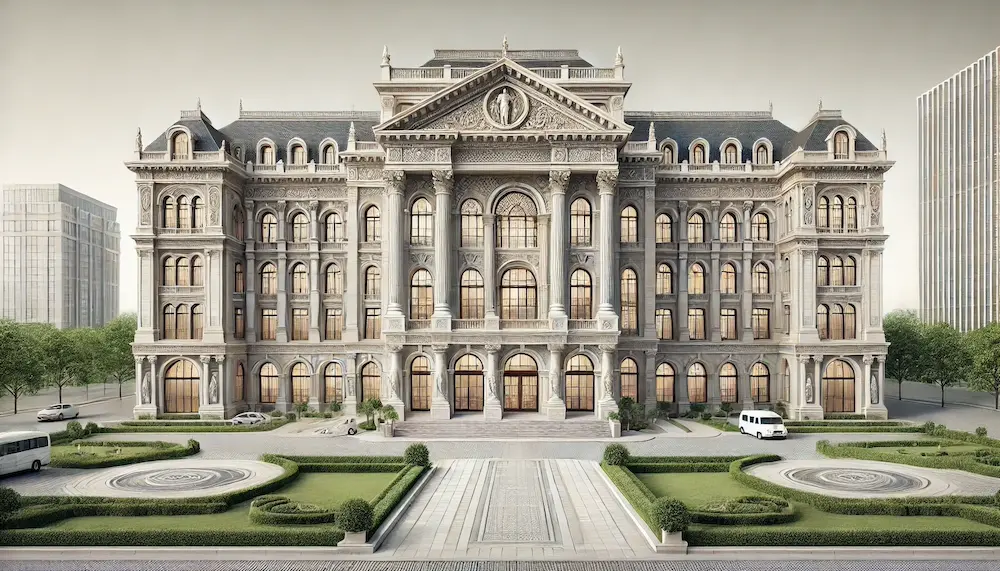Neoclassical hospital architecture emerged in the mid-18th to early 19th centuries, drawing inspiration from the classical architecture of ancient Greece and Rome. This style is characterized by grandeur of scale, simplicity of geometric forms, and the use of classical details such as columns and pediments. In the context of hospital design, neoclassical architecture aimed to convey stability, order, and rationality, reflecting the Enlightenment ideals of the period.
History and Origins of Neoclassical Hospital Architecture
The neoclassical movement began as a reaction against the ornate styles of Baroque and Rococo, seeking a return to the perceived purity of classical antiquity. In hospital architecture, this translated to designs that emphasized symmetry, proportion, and the use of classical elements to create an environment conducive to healing. Notable examples include the Greenwich Hospital Chapel in London, redesigned in neoclassical style by James Stuart between 1780 and 1788, which influenced subsequent hospital designs with its restrained elegance.
Key Features of Neoclassical Hospital Architecture
- Symmetry and Proportion: Neoclassical hospitals often feature balanced and harmonious designs, with facades organized around a central axis.
- Classical Elements: The use of columns, pilasters, and pediments is prevalent, drawing directly from Greek and Roman architecture.
- Grand Entrances: Impressive porticos with columns and entablatures serve as focal points, symbolizing the importance of the institution.
- Use of Durable Materials: Construction materials such as stone and brick are commonly used, providing a sense of permanence and strength.
Notable Examples of Neoclassical Hospitals
- Mount St. Mary’s Hospital (Niagara Falls, New York, USA): Built between 1912 and 1914, this hospital showcases neoclassical revival architecture with its red brick facade, limestone foundation, and central pavilion featuring Ionic columns.
- Italian Hospital of Montevideo (Montevideo, Uruguay): Founded in 1890, this late neoclassical building was designed by architect Luis Andreoni. It features Roman-style columns and a symmetrical facade, reflecting the neoclassical emphasis on order and classical beauty.
- Hospital del Nuncio Nuevo (Toledo, Spain): Commissioned by Cardinal Lorenzana at the end of the 18th century, this neoclassical hospital was designed to house people with mental illness. Its design includes a central oval chapel and a facade with a double portico, exemplifying neoclassical principles of symmetry and functional design.
Considerations When Choosing Neoclassical Hospital Architecture
- Aesthetic Appeal: Neoclassical architecture conveys a sense of grandeur and timelessness, which can enhance the perceived prestige of a healthcare institution.
- Functional Limitations: While aesthetically pleasing, neoclassical designs may require adaptation to meet modern healthcare needs, such as accommodating advanced medical technologies and ensuring compliance with contemporary building codes.
- Cultural Significance: The use of classical architectural elements can resonate with cultural values that emphasize tradition and stability, potentially influencing patient and community perceptions.
Conclusion
Neoclassical hospital architecture represents a significant period in the history of healthcare facility design, embodying the ideals of order, rationality, and beauty through classical architectural principles. While modern healthcare demands may necessitate functional adaptations, the enduring aesthetic qualities of neoclassical design continue to inspire and influence the architectural landscape of medical institutions worldwide.
